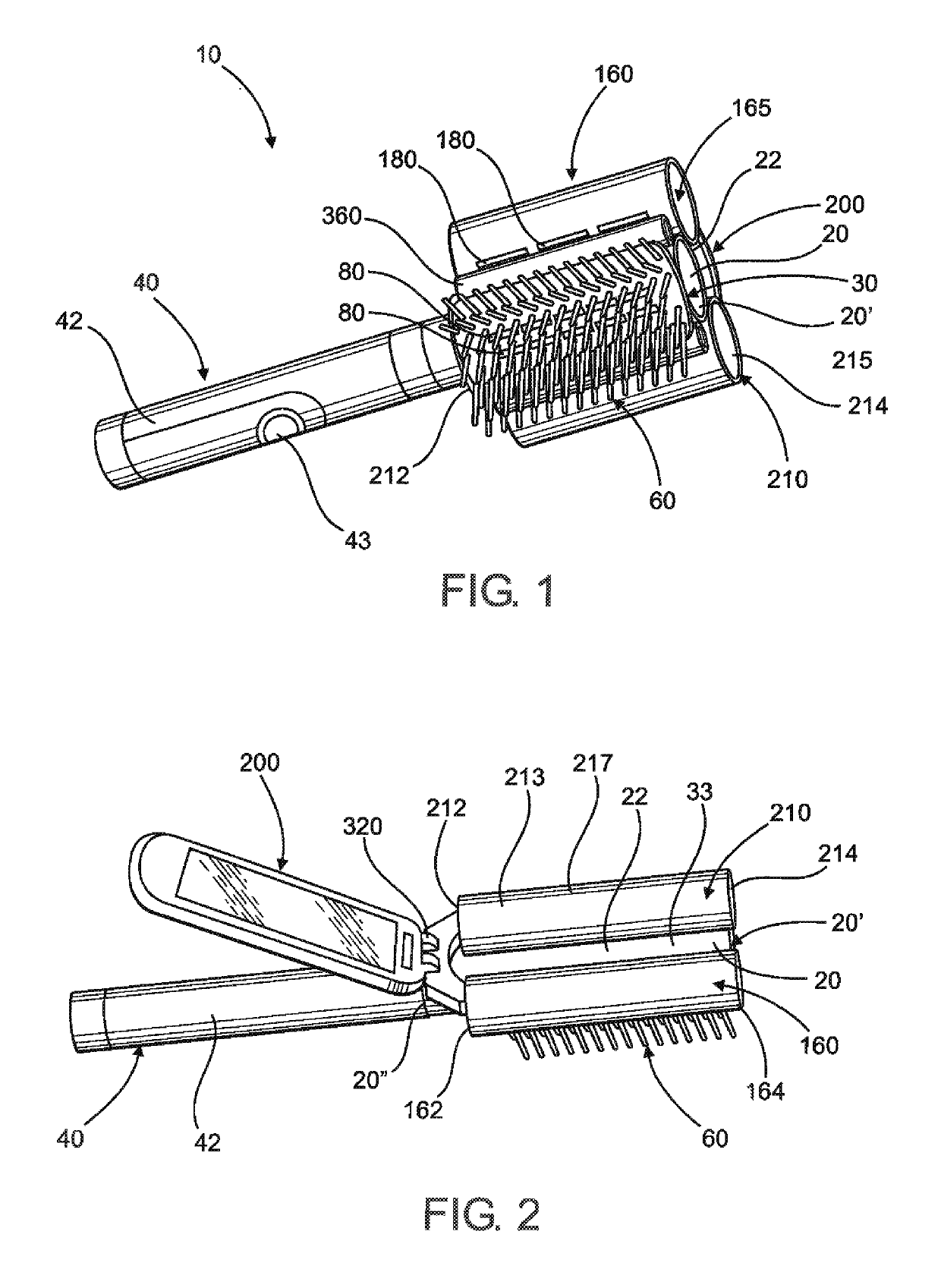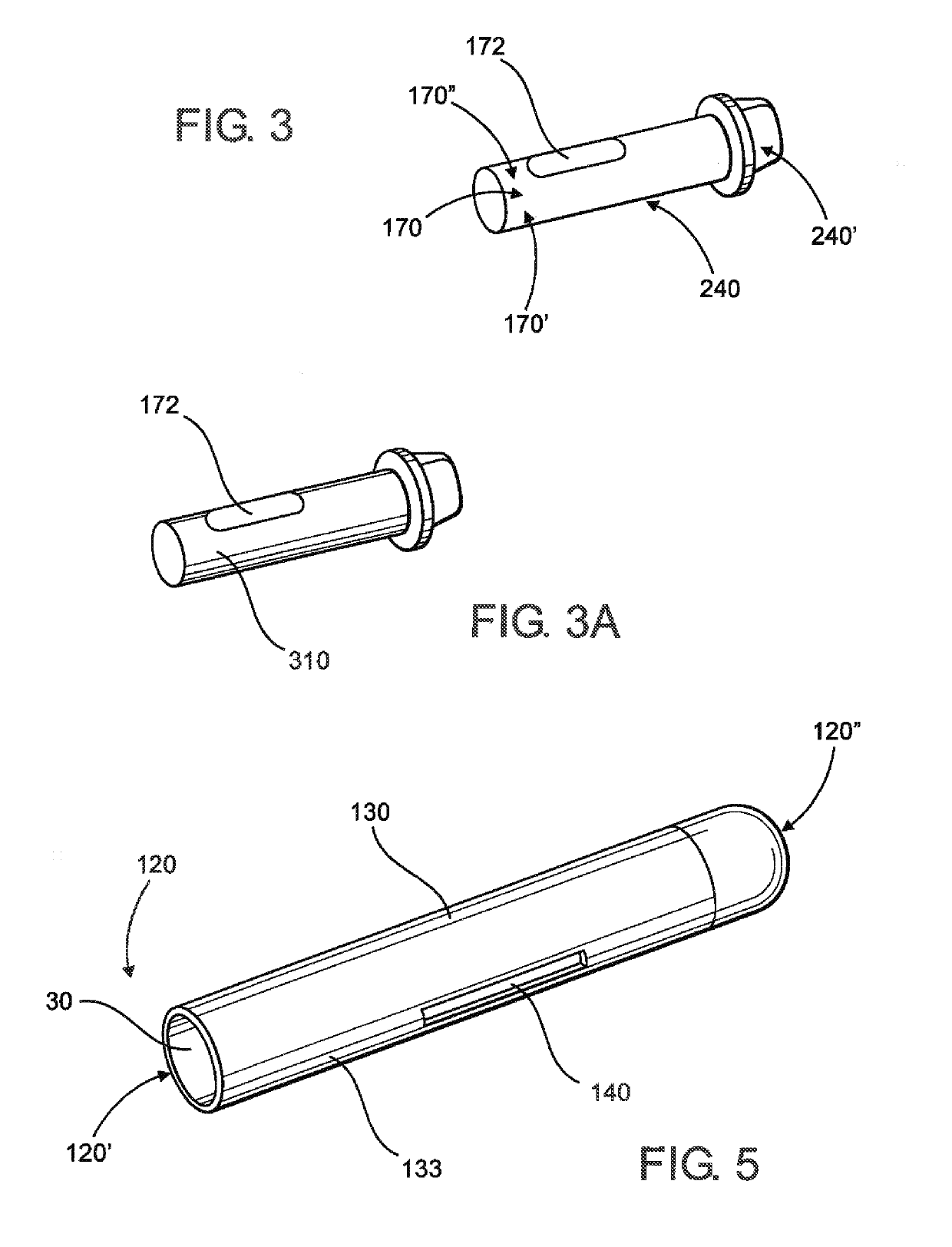With several contributing factors for hair loss and limited research available, comprehending hair loss can be intimidating to many.
This means that the
follicle prohibits further
hair growth causing the affected strand of hair to result in being shorter and finer than normal.
Consequently over time, the
follicle inhibits further new
hair growth, causing the hair strand to eventually fall out of the
follicle, and perish indefinitely.
However, many of them only tend to work in only a certain percentage of men and women.
This leaves a vast sample of hair loss sufferers without help.
Both of these recognized options, however, do not indiscriminately provide results to everyone.
This essentially means that any
lag, inconsistency or
discontinuation in application to the affected area will more than likely result in major setback.
This may include losing some or most of the regrown hair and / or continued loss of existing hair.
Furthermore, this loss of hair can occur within a short amount of time, despite months of consistent use by the user.
Additionally,
Minoxidil also has many adverse effects to humans and their pets.
For example,
Minoxidil can be highly toxic to some domestic pets, causing death advertently with mere
skin contact with the animal.
Side effects can also be serious in some cases.
Other ingredients besides Minoxidil in many topical solutions such as
alcohol or
propylene glycol can also present their own issues.
First, effective consumable drugs to treat hair loss require a prescription by a
medical practitioner.
This means that the hair loss sufferer cannot merely go to a local
pharmacy and get the consumable drugs over the counter.
Additionally, some of the consumable drugs taken orally are prone to harmful side effects.
Moreover, what is alarming is that the drop in
testosterone level in these cases, can last at an average of 40 months, sometimes even after the user has discontinued their use.
This can be a devastating experience for men, who are not only losing hair, but are now also suffering from unwarranted side effects of low
testosterone.
Accordingly, many of the side effects due to consumable drugs for hair loss prevention seem to be more cumbersome than the problem of losing hair itself.
As another drawback often associated with consumable drugs taken orally is that they must be taken regularly often for an average of 18 months before the user taking them regularly can see desired results.
Furthermore, in some cases, the user may not see any results at all.
In other words, the consumable drugs do not guarantee hair regrowth or hair loss prevention for everyone.
This means that the user may regularly use the drugs, yet not experience any benefits of reduction in hair loss.
As a result, the person could have possibly spent hundreds, if not thousands of dollars on these consumable drugs, only to realize that the results are not guaranteed.
The surgical solutions, in most cases, however, are expensive and generally not covered by insurance companies.
Furthermore, many insurance companies do not cover such type of cosmetic surgeries.
Meanwhile, the minimally invasive surgeries to treat hair loss are also
time consuming.
They require a lot of time and commitment on the part of the patient.
Many surgeons also require their
hair transplant patients to follow-up regularly due to the possible inconsistency in the growth of follicles, given that new hair was transplanted only in some follicles.
For example,
surgical procedures can leave an unpleasant scar on the person head, usually in the donation area, where the surgeon has removed the scalp and hair.
Moreover, as in other solutions, there are no guarantees in
hair transplant surgeries.
For instance, a hair loss patient with a larger balding area and smaller donating area from where hair will be transplanted may not yield to a favorable aesthetic gratification as someone who may have a smaller balding area and larger donating area resulting in a fuller hair look.
Therefore, in certain procedures, the hair loss solution due to a transplant may appear to be even worse than the original condition.
These too, however, have detrimental results.
For wearers, there is a constant fear of discovery, as it can be difficult to admit that they are wearing a wig or toupee.
Furthermore, despite the quality of wigs
ranging from synthetic to human hair, there is no guarantee that wigs or toupees will go completely undetected by the probing eyes of the public.
Correspondingly, quality hair wigs or toupees made of real human hair are highly expensive and hard to find.
Additionally, hair wigs and toupees also require a great detail of maintenance.
Wearing a wig or toupee tends to call for constant upkeep and can be a time absorbing ordeal that requires frequent retightening, washing, brushing and cleaning.
Moreover, because some wigs or toupees require a vacuum fit on the hair scalp to prevent
bacteria, and a non-vacuum environment can
breed bacteria on the exfoliated
skin, increasing excess sebum and causing undesirable
odor on the scalp.
Clearly, there is an exorbitant amount of commitment and expense required in both the known non-surgical and
surgical methods currently in the market, without any guarantee of satisfactory results.
Fortunately, technology has improved and
thinning hair or hair loss is no longer a niche market confined only to the surgical and non-surgical solutions aforementioned.
Accordingly, the
cosmetic industry directed to hair loss is no longer focusing only on topical solutions, drugs taken orally or surgical transplants as viable alternatives, and as a result, some new hair loss solutions are now becoming available.
 Login to View More
Login to View More  Login to View More
Login to View More 


